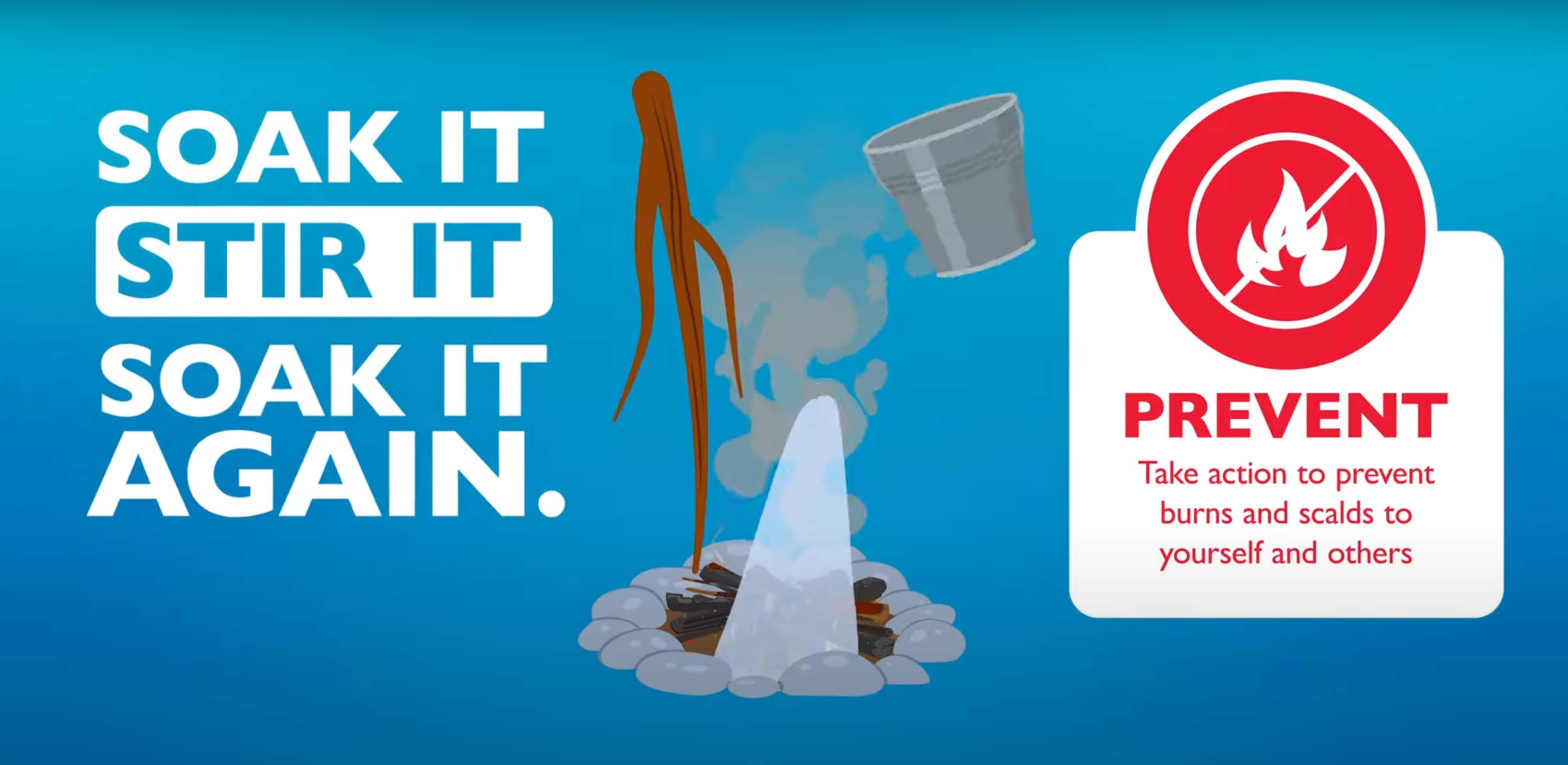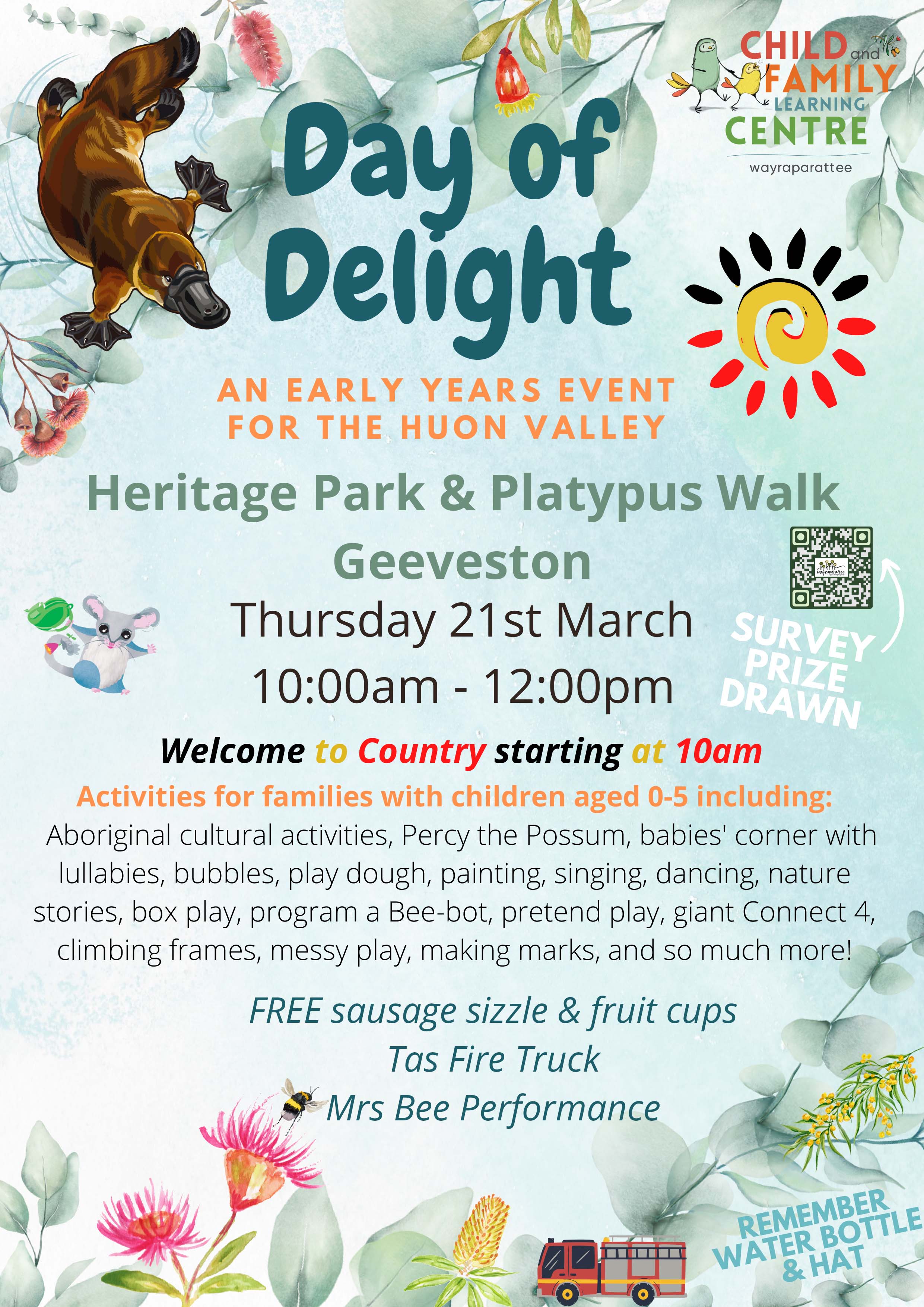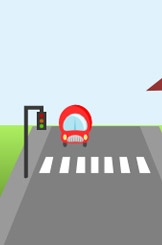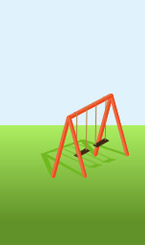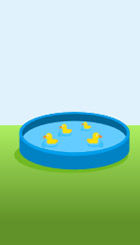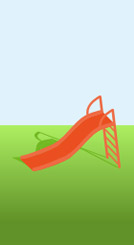News
Kidsafe Tasmania were finalists in the 2024 Community Achievement Awards
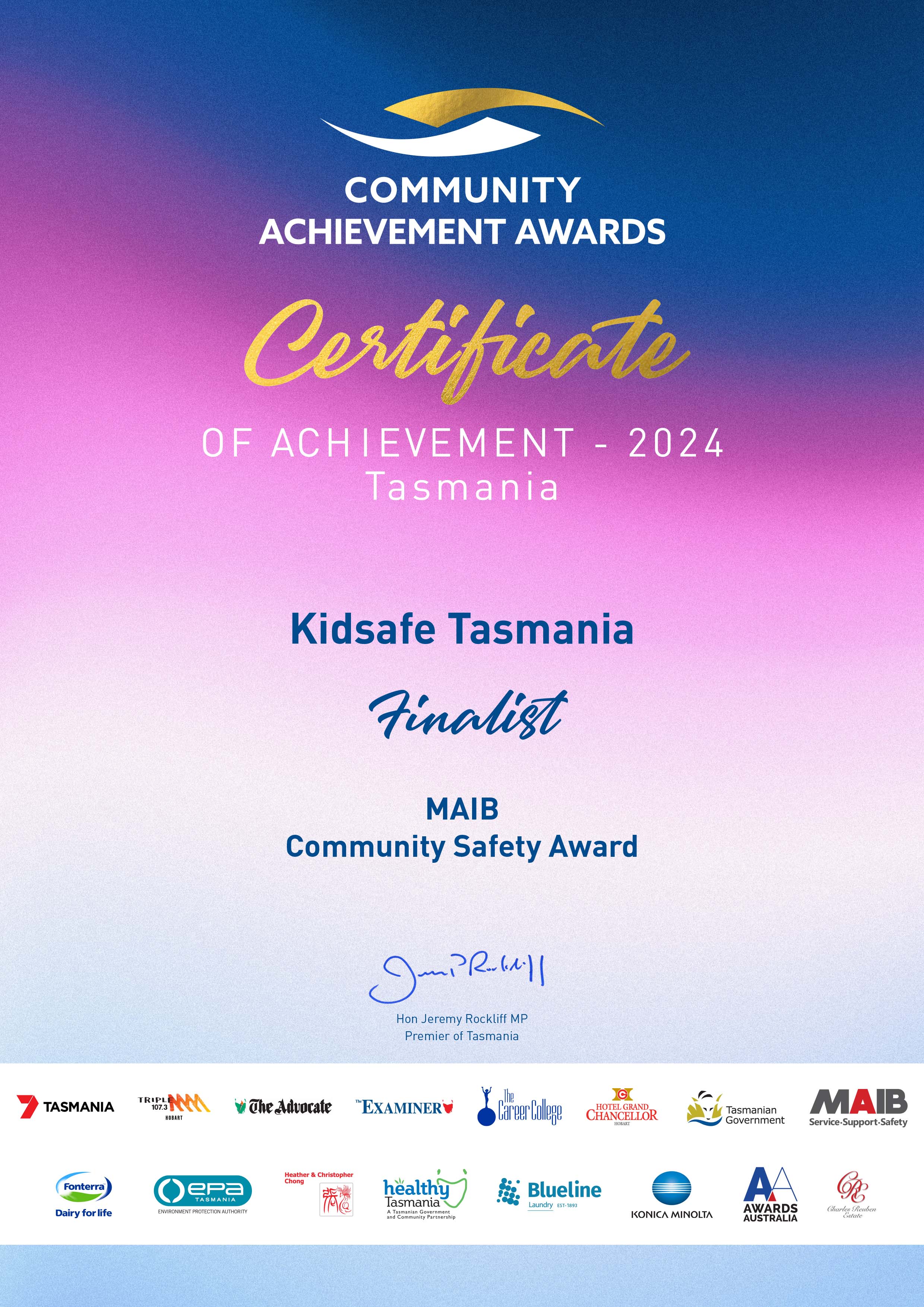
New Animated Video - Prevention of Fire Pit Burns - click here
The Royal Hobart Hospital (RHH) Burns Unit has teamed up with Kidsafe Tasmania and other partners to launch a new animated video focused on preventing fire pit burns, a significant cause of burn injuries across Tasmania. The animation aims to educate families on the risks associated with open fires outside including fire pits, bonfires and campfires and provide practical safety tips to reduce incidents, including the import burns first aid message, “Cool for 20” particularly as the summer holidays and camping season begins.
2-day Nationally Accredited Type 1 Child Restraint Fitters Course on the 28 and 29th November 2024
Kidsafe Tasmania* is holding a 2-day Nationally Accredited Type 1 Child Restraint Fitters Course on the 28 and 29th November 2024 (9am to 4pm) at the Howrah Community Centre - 11 Howrah Road, Howrah. $660.00 inc GST per person
ENROL NOW by calling Peter Gillon M: 0407 692 403.
*The course is delivered under agreement with Kidsafe WA’s Registered Training Organisation (RTO) – National provider Number 52376.
See full details below.
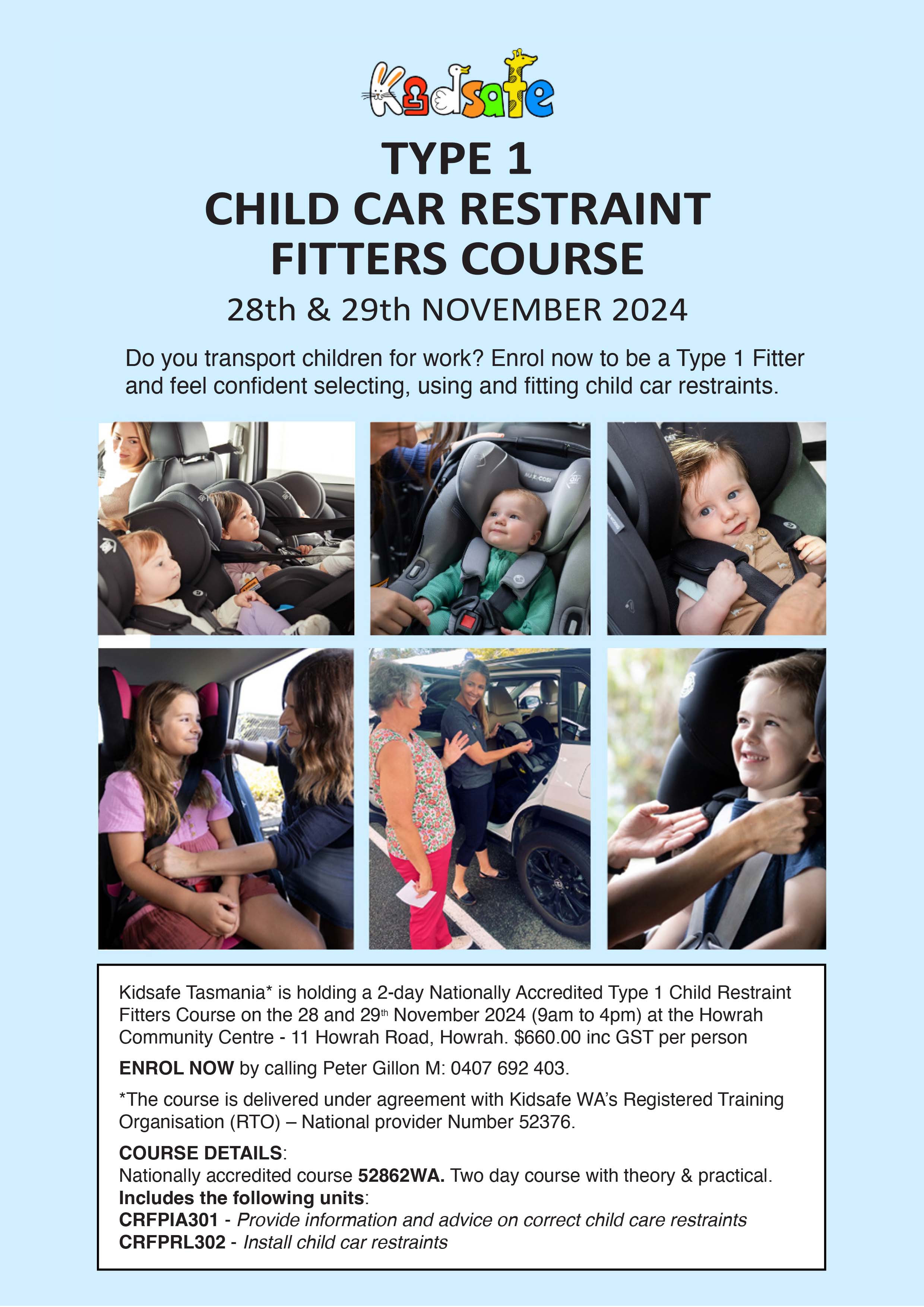
DANGERS OF TOPPLING FURNITURE
Residential Tenancy Amendment Bill 2024
Kidsafe Tasmania welcomes the Residential Tenancy Amendment Bill 2024 which was tabled today in Parliament and commends the Tasmanian Government on its introduction. CEO Jenny Branch-Allen expressed strong support for this positive legislative move, which will help protect children in rental properties from the dangers of toppling furniture—a hazard that can lead to serious injury or even death among young people.
Click here to download the full media release.
More details are available at this page.
CHILD RESTRAINT EVALUATION PROGRAM (CREP)
The ratings for 12 newly tested child car seats have been officially published on the CREP child car seats website.
Here is the link to the latest news regarding these child car seats. Find and compare seats on the market and see what best suits your needs and budget. You can be assured that all the tested seats meet the Australian Standards. Click here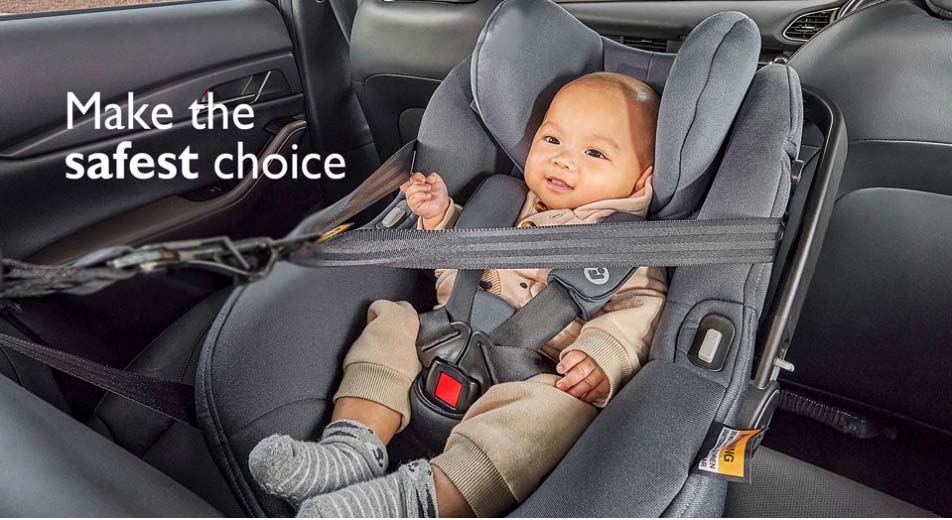
Welcome to THE HEART BEAT CLUB - giving you the KNOWLEDGE and SKILLS to help BABIES AND TODDLERS in an EMERGENCY.
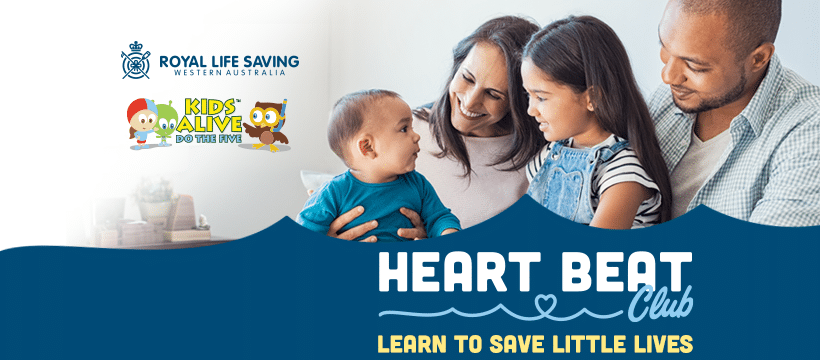
The Heart Beat Club is a 1-hour online training course offered by Royal Life Saving Society WA and Kids Alive.
It offers:
- Understanding the signs of a medical emergency involving infants and young children around home or when water.
- CPR Techniques for Little Ones including chest compressions and breaths.
- First Aid Essentials for common injuries and emergencies such as choking, burns, scalds, poisoning, falls and shock.
- Creating a safer environment to prevent common injuries.
It's available online until May 31, 2024. To register and complete the course, please click below:
https://www.heartbeatclub.org.au
Please spread the word by encouraging people you know - parents, grandparents, and carers to skill themselves in knowing how to save a little life.
Kidsafe Tasmania will be at the early years Day of Delight event at Geeveston on Thursday 21st March 10am to 12 with free fittings and kidsafe advice on injury prevention.
Look forward to seeing you there!!
‘Safe Barriers Save Lives’ Backyard Pool Safety Campaign
Homeowners urged to check their pool and spa barriers to help reduce/prevent toddler drowning rates.
Kidsafe's annual ‘Safe Barriers Save Lives’ campaign calls on all homeowners to ‘help save a life’ by checking their pool and spa barriers in the lead up to the warm summer months.
According to Royal Life Saving Society of Australia, swimming pools are one of the most common locations where these incidents account for 32% of all toddler drownings.
Campaign ambassador and Australian Olympic swimming champion, Matt Welsh OAM, knows the benefits that learning to swim and growing up around water can provide for children. As a father of six, he also acknowledges the risks that swimming pools and spas can pose if strategies aren’t put in place to help keep children safe.
“It’s important to check that barriers and gates are in good working order as we head into the warmer months – particularly as many of us will be spending more time in and around the backyard pool this summer. By doing so, you could save a child’s life.”
“Toddlers are attracted to water, yet don’t understand the dangers it can pose. They can drown quickly and silently - a split second is all it takes for them to gain unsupervised access to the water area and find themselves in trouble”, said Mr Welsh.
Bath Time Swim Lessons
Bath time swimming lessons for 2, 3, and 4 year old children. Similar lessons suitable for babies will be released soon. The bath sessions reinforce the importance of supervision but also include swimming skills to support children’s learn to swim journey. Bath time sessions can also run alongside formal learn to swim lessons to enhance children’s confidence and skill level.
Learn To Swim in The Spring
For those families who are able to access learn to swim lessons 'Kids Alive' want to showcase the National Swimming and Water Safety Benchmarks. They've have put together a range of videos to showcase some of the skills every Australian at the age of 6 years should be able to achieve.
Click here to access the video links.
PLAYGROUND INSPECTIONS
Building on our belief that playground injuries can be prevented or their severity reduced through careful planning, design and maintenance, we have set up a playground inspection service run by Level 3 Accredited Playground Inspector, Geoff Lucas.
We are taking bookings for playground Inspections to assess the safety of the equipment, foundations and playground surfaces and to measure their compliance with Australian Standards AS4685 and AS4422. Enquiries welcome. POA.
We also offer telephone/email playground advice and will be progressively upgrading our website, information sheets and publications on playground safety.
Ph: Geoff Lucas 0417 352 264
Email: blacksnake3@bigpond.com
Kidsafe Tasmania presented to National and Australasian conferences in September 2022
Family Day Care Australia 2022 National Conference
The FDCA 2022 National Conference took place from 15 – 17 September 2022 at the Hotel Grand Chancellor in Hobart, and brought together stakeholders from the family day care and early childhood education and care sector - to connect and discuss key issues that are impacting the sector.
Kidsafe Tasmania CEO Jenny Branch-Allen and Road Safety Manager Peter Gillon presented on the subject “STRENGTHENING OUR WORK WITH FAMILY DAY CARE IN TASMANIA”. This was a great opportunity to strengthen our ties with Family Day Carers, and also learn from national and state FDC speakers and participants from across the sector.
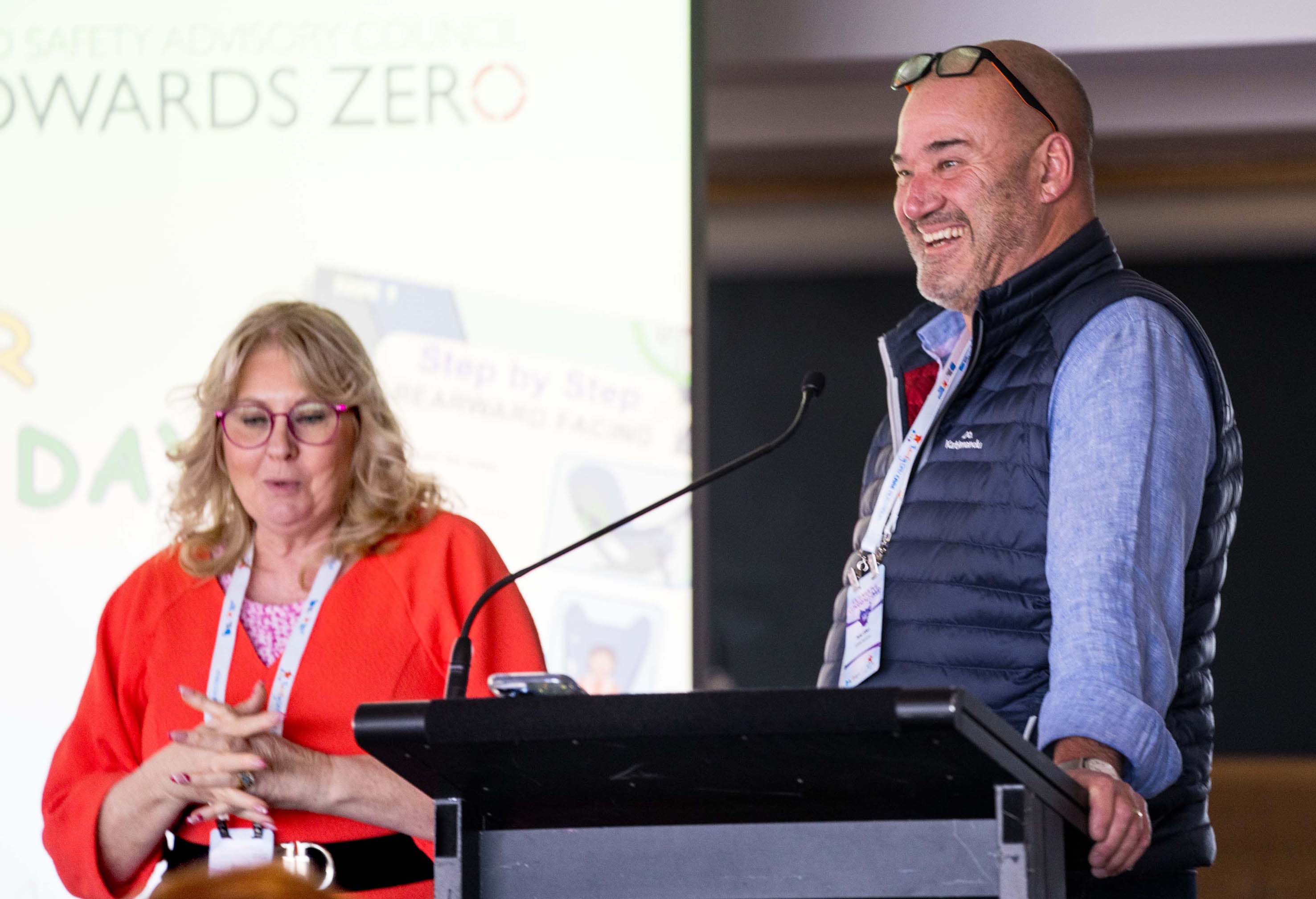
Our presentation was in 2 parts: (Click here for link to presentation slides)
- Jenny showed how by working proactively with individual day carers, we ensured that during COVID children were travelling in correctly fitted seat belts at a time when no-one else was available to help.
- Peter described how we corrected the main problems found in child restraints during the COVID time restrictions, and how simple mistakes in fitting a child restraint can lead to injury or worse in a serious car accident.
- They also illustrated innovative ways Kidsafe assisted family day carers during this period.
Kidsafe Tasmania also had a display throughout the conference. See Jenny below doing a great job of showcasing our core services and products to the state and national Family Day Care sector.
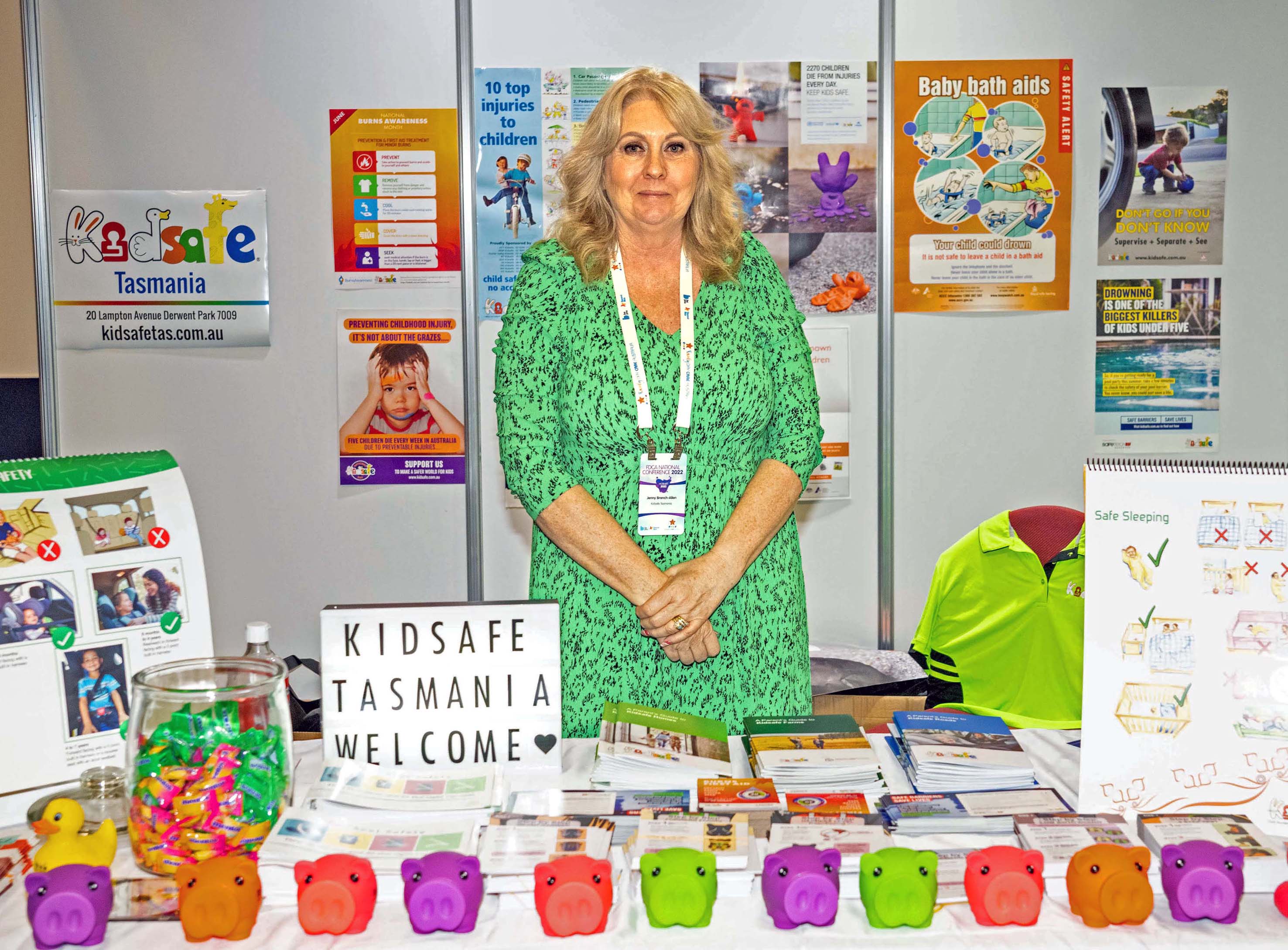
A first-class line-up of key note speakers provided delegates with the opportunity to select from a wide variety of workshops. These interactive workshop sessions covered a range of different topics that appealed to all those within the sector.
2022 Australasian Road Safety Conference
The 2022 ARS Conference took place from 28 – 30 September 2022 at Otautahi, Christchurch in the South Island of New Zealand.
Kidsafe Tasmania CEO Jenny Branch-Allen and Road Safety Manager Peter Gillon presented a 20 minute pre-recorded video on the subject “WHEN SERVICES CLOSE DUE TO COVID, WHAT DO YOU DO?”. They also attended the conference in person and participated in a Q&A session for the “Virtual: Human Factors” part of the conference. This followed the acceptance of the paper Jenny submitted, and was a great opportunity for Kidsafe Tasmania to participate on the international stage.
See below Peter and Jenny in a screen shot from their video presentation. The full video presentation can be viewed by clicking on this link to our YouTube channel: https://youtu.be/F9KgzUniY4s

The conference, with a theme of ‘Changing Today for Tomorrow’ was held at Christchurch’s brand new convention and exhibition centre, Te Pae, which is set in the heart of the city centre overlooking the iconic Avon River. It was a multi-disciplinary event featuring representatives from all facets of road and transport safety including research, teaching, practice and policy.
It provided a critical forum for everyone interested in road safety from Australia and New Zealand to come together to share stories, celebrate success, make connections and learn from one another, as we work towards our common goal of eliminating deaths and serious injuries from our road networks.
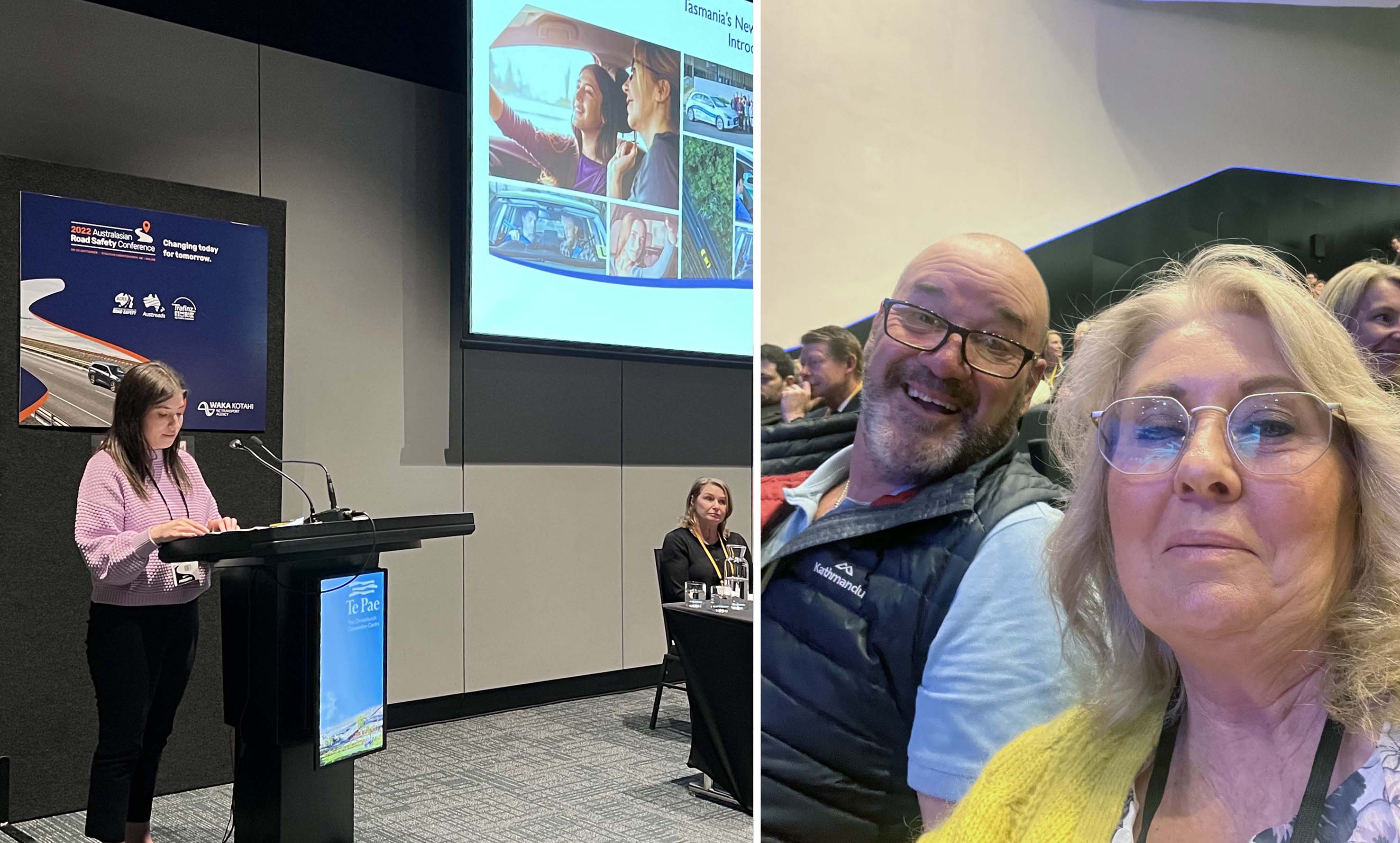
The Australasian Road Safety Conference was born in 2015 with the aim of bringing together road safety stakeholders and decision-makers from Australasia and international jurisdictions to facilitate collaboration and information sharing.
Homeowners are urged to check their pool and spa barriers as toddler drowning rates spike.
‘Safe Barriers Save Lives’
Is your backyard pool set for summer?
Despite significant reductions in toddler drowning deaths over time, drowning continues to be one of the leading causes of accidental death for Australian children under 5 years of age. Statistics from the Royal Life Saving Society of Australia show that in 2021/22, 17 Australian children aged 0-4 years drowned, with swimming pools being the most common location where these incidents occurred.
While safety barriers can be effective in reducing the risk of drowning incidents, evidence suggests that a large number of drowning deaths are the result of barriers that are faulty, or non-compliant with Australian standards.
Kidsafe’s ‘Safe Barriers Save Lives’ campaign urges all pool and spa owners to register and check their barriers in the lead up to summer. The campaign also promotes the importance of other water safety measures to keep children safe around water, including active adult supervision, CPR/first aid knowledge and water awareness. Click here to see the full media release for Kidsafe Australia.
For more information to assist you to check the safety of your pool and spa barrier, please use the resources below:
‘Safe Barriers Save Lives’ campaign DL flyer
‘Safe Barriers Save Lives’ campaign A3 poster
Royal Life Saving Australia’s Home Pool Safety Checklist

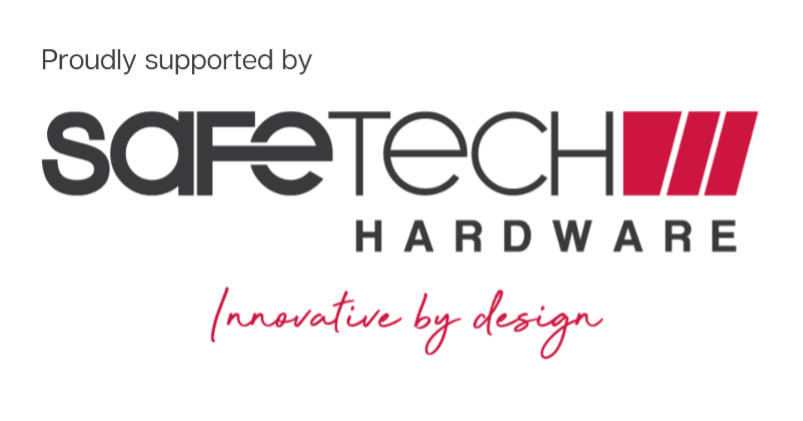


Click here to download this trend report on agricultural injury and fatality, produced by Farmsafe Australia with funding from the Australian Government’s National Farm Safety Education Fund. The Snapshot page is shown below. For more information about the content, click here.
This project is supported by the Department of Agriculture, Fisheries and Forestry (DAFF), through funding from the Australian Government’s National Farm Safety Education Fund.
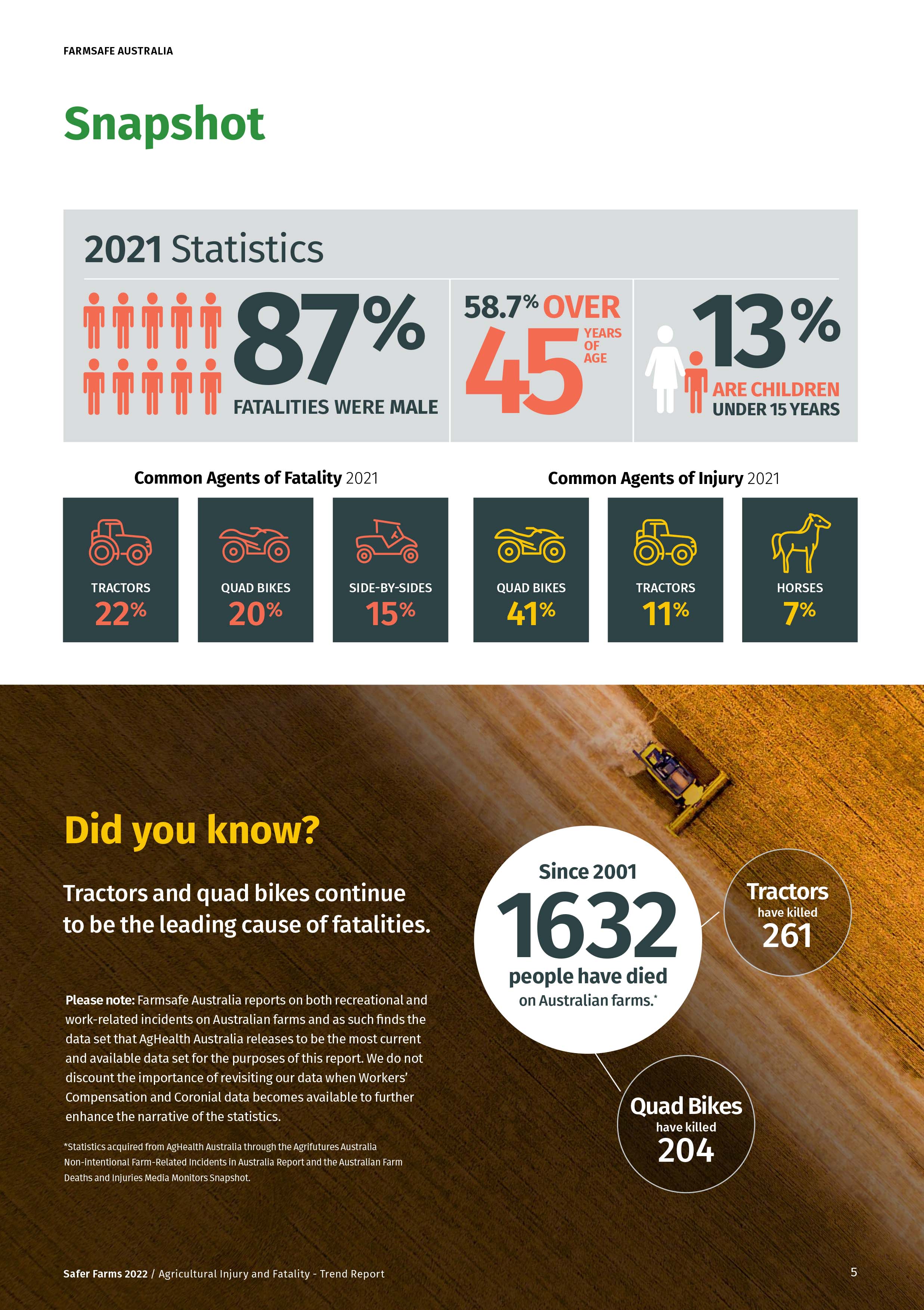
New mandatory standards for button batteries from 22 June 2022
The Australian Government has introduced four new mandatory standards for button batteries and products containing button batteries. The reason for the new standards is to reduce the risk of death and injury associated with button batteries.
What do the new standards mean?
· Secure battery compartments on products that contain button batteries.
· Compliance testing to demonstrate the batteries are secure.
· Child-resistant packaging.
· Warnings and information on packaging.
All businesses that supply button batteries or products containing button batteries in Australia must comply with the new standards by 22 June 2022.
Growing Up in Australia Snapshot Series: Adolescent injury – latest findings
The Australian Institute of Family Studies (AIFS) has released its third Growing Up in Australia research snapshot for 2021, ‘Adolescent injury’.
The report looks at young Australians’ experiences of injury and found that in the two years prior to being surveyed, 22% of 16 to 17 year olds reported an injury serious enough to cause them to miss at least two days of school work. Over half (57%) of injuries occurred while playing sport.
The snapshot supplements the commonly cited hospital record data on adolescent injury and shows that two in every three injuries are not treated at hospitals. The findings highlight that injury, as well as being the major cause of death in this age group, has significant implications for adolescents' health. Further information on the context of injuries, as well as an examination of risk factors for sports and non-sports injuries is provided.
The Snapshot Series highlights recent findings from Growing Up in Australia: The Longitudinal Study of Australia Children (LSAC). LSAC began in 2004 and has followed two cohorts of Australian children ever since, as they grow into adolescents and young adults.
To find out more, read the paper: https://growingupinaustralia.gov.au/research-findings/snapshots/adolescent-injury
Homelessness Week - Monday 2nd- Sunday 8th of August 2021
Homelessness Week raises awareness of people experiencing homelessness, the issues they face and the action needed to achieve enduring solutions. Children who suffer homelessness are also at greater risk of unintentional injury. Homelessness Week is a national event, with events held across Australia during the first full week in August.
Click here for full details of Homelessness Week - from the Shelter Tasmania website - including a whole range of events through the week.
National Farm Safety Week 2021 - high rates of unintentional injury and death in children on farms
The theme of this year's Farm Safety Week is week is ‘Farm Safety Through The Ages – From 2-92’.
Here is a link to an article by ABC News Vic Country Hour journalist Jane McNaughton, that really highlights the safety issues for children on farms. Click here to see the article.
Some key points of concern:
- Approximately 15 children are killed on Australian farms each year
- Almost one in six farm fatalities are kids.
- 15 per cent of farm deaths are children under 14 years old, according to an AgHealth Australia study
- Children have higher rates of unintentional injury and death than children in metropolitan areas.
- Dams and large bodies of water pose a drowning hazard for children.
- Quad bikes are really dangerous - many Australian children have die in quad bike accidents in recent years
- Also motorbikes and farm vehicles, such as tractors, as well as farm animals
All of these risks can me minimised or eliminated by proper supervision and farming practices that take into account childrens' presence on the farm. More detail of strategies such as safe play areas, are shown below. Click here for a datasheet on farm safety.
Click here for some detailed information on keeping your children safe on the farm.
Learning About Burning video
As the finale to Burns Awareness Month, Hobart-based children’s entertainers The Scallywags have performed in a video called Learning About Burning using information provided by the Burn Unit focusing on safety in the home, wood heater burns prevention and Burns First Aid.
The key messages are to always use a fixed fire screen around heaters and fires and keep two meters from the heater. Ensure working smoke alarms are installed and if you do sustain a burn, remember to cool the burn under running water for 20 minutes, no ice or ointments, cover the burn and seek medical attention.
Click here to watch the video.
Button Battery Safety – Supplier guide and fact sheet for mandatory standards
In December 2020 the Australian Government made mandatory safety and information standards for button batteries and consumer goods containing them.
The ACCC has developed A Guide for Business on the Application of Mandatory Standards (click here). The purpose of this guide is to assist suppliers in understanding the requirements for secure battery compartments, child resistant packaging, and warnings and information.
The ACCC has also developed a Fact Sheet (click here) which summarises the requirements of the new standards for the benefit of suppliers.
Both documents are available on the Product Safety Australia website by clicking on the above links.
When should my child's car seat face forward?
Experts concerned too many mistakes are being made
Click here for an ABC interview exposing the misuse rate of car seats
Safety of Children in Motor Vehicles
- National Best Practice Guidelines launch 30 March 2021
Click here to read media release.
The aim of these guidelines is to provide parents, carers, and road safety practitioners with clear advice on optimal use of child restraints and seat belts by children aged 0-16 years when travelling in motor vehicles, to minimise their risk of injury in the event of a crash.
These guidelines were developed through a partnership between Kidsafe Australia and Neuroscience Research Australia, supported by a panel of child road safety experts. They were approved by the National Health and Medical Council of Australia in November 2020. Click here to download the guidelines.
For full details and resources available on the safety of children in motor vehicles - on the Kidsafe Australia website, click on this link.
The laws in all Australian states and territories outline the minimum child car restraint requirements for all children up to the age of 16 years. The available evidence shows that there is more that can be done above and beyond these minimum requirements, to minimise injury to child passengers, by encouraging best practice child restraint use.
To see the Top Ten Steps for Safer Travel identified in these guidelines, click on this link.
The new recommendations outlined in the Guidelines include:
- Children should use their child restraint or booster seat when travelling in rideshares (e.g.Uber) and rental cars, as well as taxis.
- Strengthened advice to use the ‘5 Step Test’ to decide when to transition from a booster seat to adult seat belt.
- Children should be encouraged to sit in an upright seating posture so their restraint can work optimally.
- Children aged 4-8 years should use an add-on booster seat in preference to an integrated booster, but children 9 years and older can safely use an integrated booster seat if their car has a side curtain airbag where they are sitting.
- Parents of low birthweight babies should use an infant car restraint designed for low birthweight babies until they can get good harness fit in a ‘standard’ child car restraint.
The New Water Safety Strategy by the Australian Water Safety Council
The New Water Safety Strategy by the Australian Water Safety Council has been launched and seeks to significantly cut the drowning rate in Australia.
Downloads
Click here to download the Strategy
Click here to download media release
Each year more than 280 people die due to drowning, with many more admitted to hospital following a non-fatal drowning incident. 41% of drowning occurs in coastal environments (beaches, ocean and rocks), 36% in rivers and lakes, and 61% outside of major cities. Males drown at a rate four times that of females and one-year-old toddlers record the highest drowning rate of any age.
The Australian Water Safety Strategy (AWSS) plays an essential role in National, State and Territory, and community approaches to preventing drowning and promoting safe use of the nation’s waterways and swimming pools. It outlines priority areas where Australia’s peak water safety bodies Royal Life Saving and Surf Life Saving, and AWSC Members can work together to prevent drowning on beaches, at rivers and lakes, and in swimming pools across Australia.
This new Australian Water Safety Strategy seeks to raise awareness about non-fatal drowning incidents, encourage communities to create local water safety plans and promote access to swimming and water safety skills for all Australians, including refugees, migrants and those living in regional areas.
In addition to skills, the Australian Water Safety Strategy promotes the importance of frontline water safety services, including volunteer surf lifesavers, lifeguards, and swimming instructors. The Strategy encourages extension of services, as well as innovative approaches such as the use of drones and emergency stations in remote locations.
Key findings – Australian Water Safety Strategy 2030
-
For every fatal drowning, there are three non-fatal drowning incidents
-
Males drown at a rate 4 times that of females
-
One-year-old toddlers record the highest drowning rate of any age
-
Rivers and lakes account for 36% of drowning deaths
-
Coastal environments (beaches, ocean and rock) account for 41% of drowning deaths
-
23% of drowning deaths occur while swimming and recreating
-
61% of drowning deaths occur outside of major cities
-
Fatal drowning rate has reduced by 26% over the last ten years
-
Child (0-4 years) fatal drowning rate has reduced by 50% over the last ten years
To stay safe around water, the Australian Water Safety Council urge all Australians to:
- Supervise children at all times in, on and around water
- Learn swimming, water safety and lifesaving skills
- Wear a lifejacket when boating, rock fishing or paddling
- Swim at a patrolled beach between the red and yellow flags
- Avoid alcohol and drugs around water
Button Batteries new mandatory standard announced
PRODUCT SAFETY AUSTRALIA (ACCC) welcomes safety and information standards for button batteries
The ACCC has welcomed the Federal Government’s decision to improve the safety of button batteries by introducing new safety regulations.
Click here for the full announcement by the ACCC
Under the new mandatory safety and information standards manufacturers must:
Manufacture their products with secure battery compartments to prevent children from gaining access to the batteries.
- Undertake compliance testing to demonstrate batteries are secure
- Supply higher risk batteries in child-resistant packaging
- Place additional warnings and emergency advice on packaging and instructions.
Button batteries can be incredibly dangerous to young children, especially for children five years of age and under. If swallowed, a button battery can get stuck in a child’s throat and cause a chemical reaction that burns through tissue, causing death or serious injury. Insertion of a button battery into body orifices such as ears and noses can also lead to significant injuries.
From the time a child swallows a button battery they are ‘walking dead’
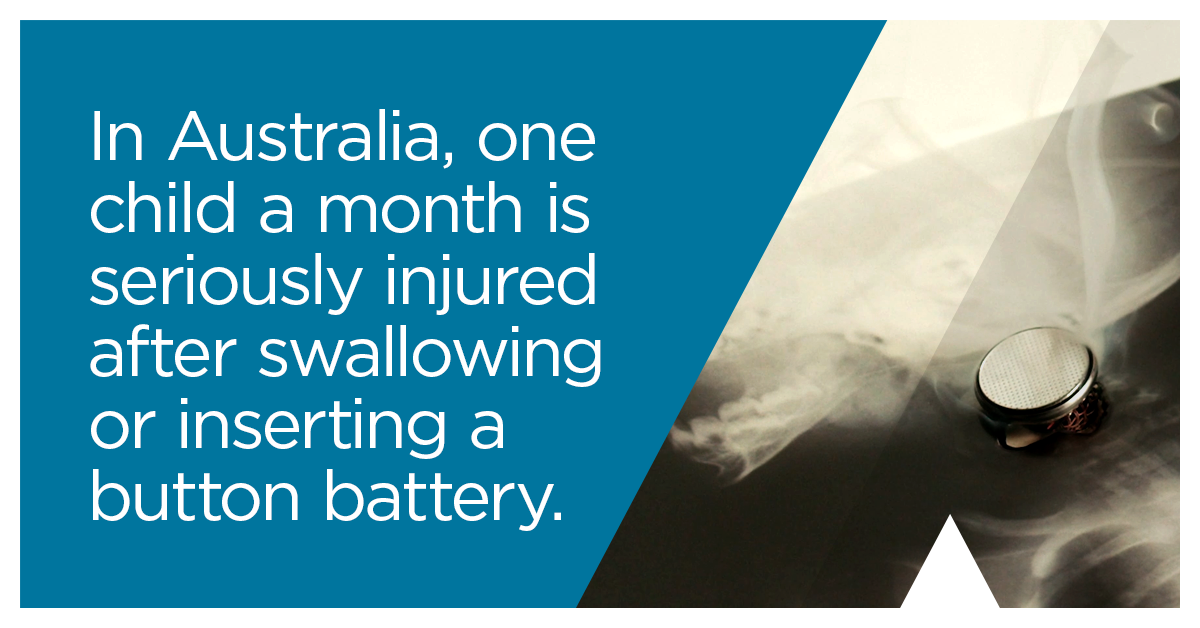
Following the death of a 3rd child in Australia due to an ingested button battery, Kidsafe are issuing an urgent reminder to everyone to be Button Battery Aware.
As the number of babies, toddlers and older children hospitalised after swallowing button batteries continues to rise, Kidsafe has issued a fresh warning that button batteries can inflict catastrophic injury and kill.
- In Australia, more than one child a month sustains a time critical or severe injury related to swallowing or inserting (into nose or ears) a button battery, with children under five years of age proving to be at greatest risk.
- These little batteries present a serious danger to children and can kill if not found in time. If swallowed, a fully charged large (3V) button battery can erode through the oesophagus in as little as two hours. Even when the battery has been removed, the chemical burn can continue to erode through tissue.
- Most severe injuries and deaths are associated with ‘occult ingestions’ where a child swallows a button battery but fails to report this to parents/carers. Though this is more common with preverbal and non-verbal children, it also occurs in older children who fear there may be repercussions or may not think to mention it.
- Dr Ruth Barker Emergency Paediatrician and Kidsafe Qld President says “These children are ‘walking dead’ from the moment they swallow the battery, because they do not look unwell. Although the parents notice something is not quite right, no-one can put their finger on it. When the diagnosis is revealed, it can be too late. The aftermath of realizing what everyone had been missing is devastating.”
- Importantly, even a battery that no longer has enough charge to power your product, may still have the capacity to kill. A large 3V lithium battery has a shelf life of 10 years.
- For 40 years companies have been deploying these ‘landmines’ into our homes with no warnings, unsecured battery compartments and no information on what to do if a child swallows or inserts one.
- Whilst the mainstream toy industry has been diligent about this issue; making battery compartments child resistant and their products durable and impact resistant; families are increasingly exposed to a deluge of cheap, low quality products across a staggering range of suppliers. The onus is on industry to come up with better and safer solutions to this worldwide killer.
In Australia, Kidsafe is looking forward to world-first legislation, with the ACCC looking at a mandatory safety standard for all products containing button batteries.
Reduce the number of products in your environment that are powered by button batteries. Although injury can still occur with cylindrical batteries this is much less common. Can you source products with enclosed batteries (USB rechargeable) or powered by alternative batteries or power sources?
Secure button batteries and the products they power. Only purchase button batteries in child resistant packaging. Products need to be durable and the battery compartments child resistant. If dropped or the compartment prised open will the battery be released?
Know which products in your home have button batteries. Regularly check that the battery is still secured in the child-resistant compartment. Where you can, keep them out of reach of small children (though beware climbers!)
Dispose of spent and unused batteries immediately and safely – ‘flat’ batteries are still dangerous. Tape them both sides with sticky tape as they come out of the product. This reduces fire risk if you are storing them for recycling and makes them a tricky mouthful to swallow. Kids can be like vultures waiting to pounce!
Recognise the signs and symptoms of occult ingestion; gagging, drooling, unable to eat properly, noisy breathing, chest pain (grunting) vomiting or passing black or red blood.
Respond immediately if you suspect someone has swallowed or inserted a button battery. Not every health facility has the capacity to assess or manage a button battery injury, so call the Poisons Information Centre first on 13 11 26 (24/7) for fast expert advice.
Warn others about the dangers of button batteries.
This video describes the risks and type of injury. Click here or on the image below to watch the video.
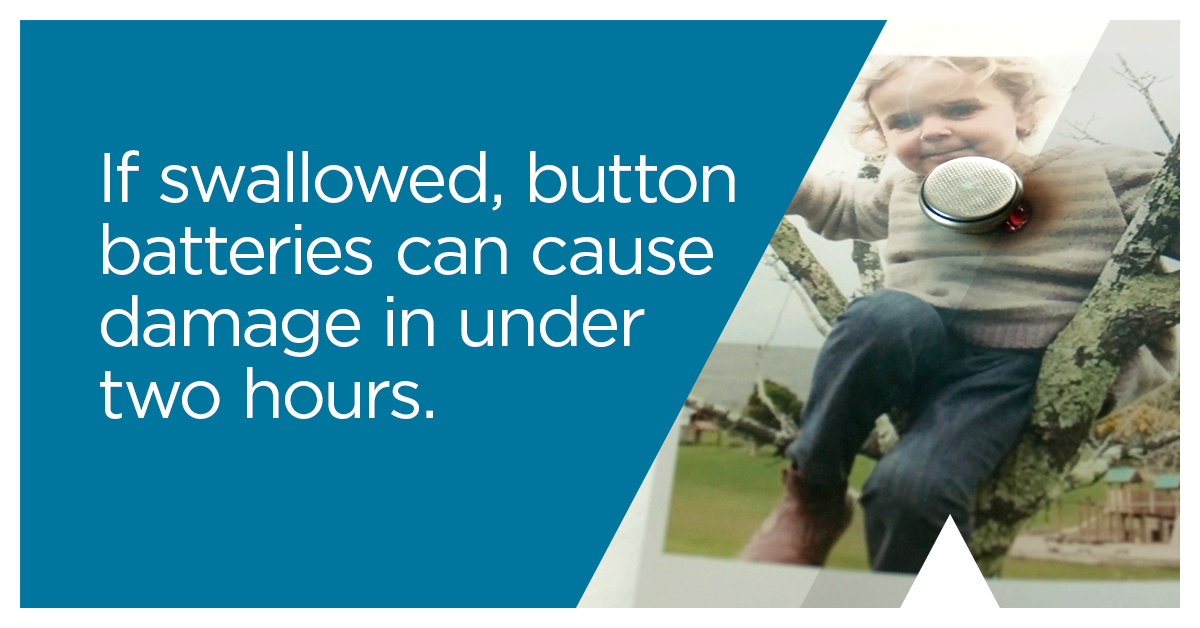
The Dangers of Battery Buttons
Coming up to Christmas one of our biggest fears is button batteries found in so many things we purchase today. Flashing Christmas cards, children’s toys even dog toys can contain these little batteries that can cause major harm to children including death.
- Making sure parents and carers are vigilant and are aware of the dangers of button batteries is a Kidsafe challenge at this time of year.
- Know the big danger this little battery poses so you can take steps to keep your family safe.
- Learn how to protect your family.
- Button batteries live in homes all over Australia.
- In Australia, one child a month is seriously injured after swallowing or inserting a button battery.
- Button batteries are lurking everywhere in your home.
- If swallowed, button batteries can cause damage in under two hours.
- Protect your family and keep button batteries out of reach of children.
- Dispose of button batteries properly.
- If swallowed or inserted, call the 24/7 Australian Poisons Information Centre on 13 11 26 for fast, expert advice.
Click here for more detailed information

Child Restraint training with St Giles, by Kidsafe QLD expert Susan Teerds
Kidsafe Tasmania was excited to be working with Kidsafe QLD expert Susan Teerds talking to St Giles Occupational Therapist in Launceston and Hobart about child restraint use with children. It was fantastic to explore options to help support children with complex needs and provide an ongoing relationship to support staff and families.
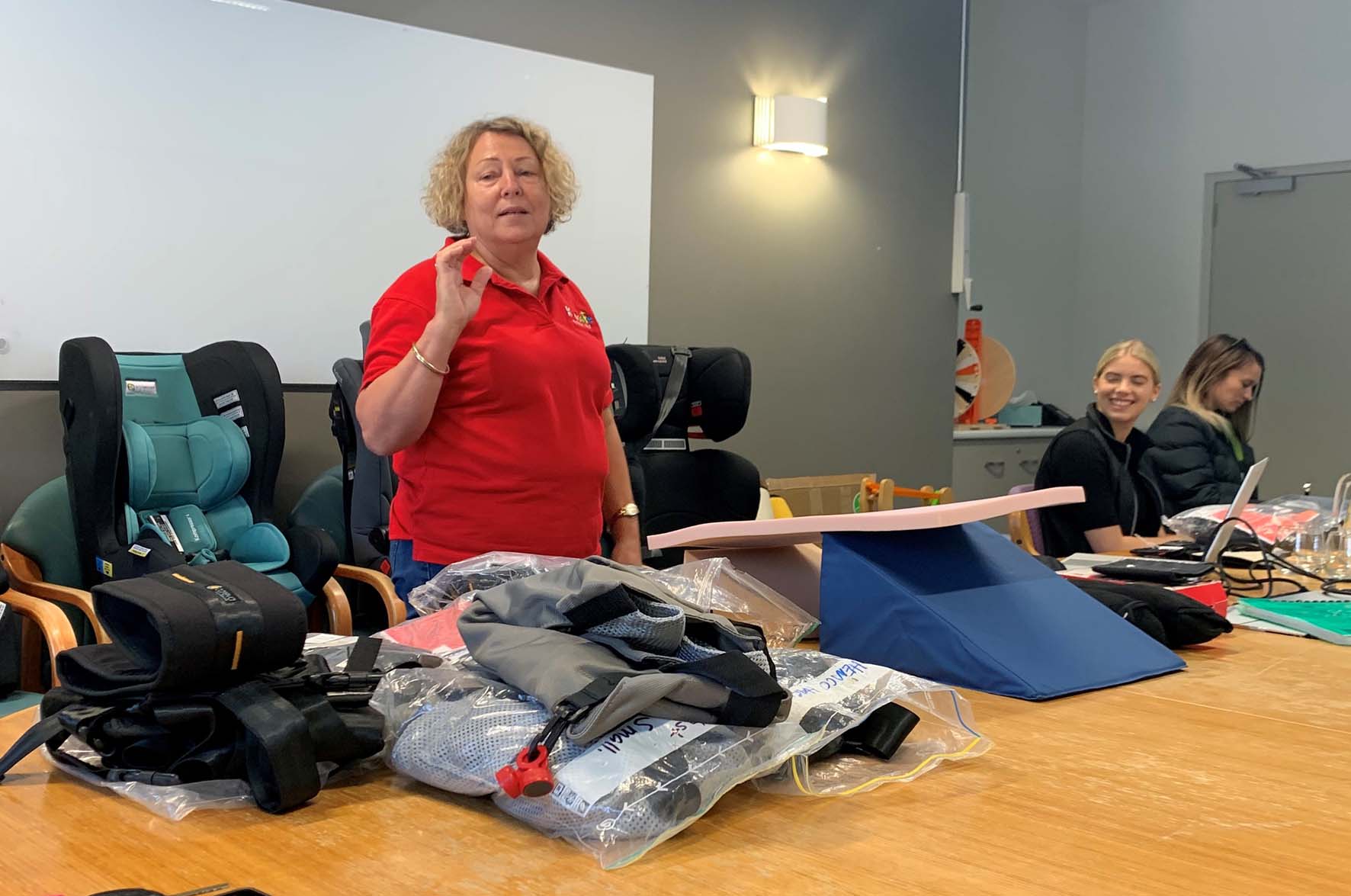
The upcoming fire season - keeping kids safe and feeling secure:
Familiarise yourself with the Tasmanian Fire Service information on fire safety in an about the home (see links below) and ensure your child knows how to evacuate your house and where there is a safe meeting place.
In case of a fire emergency and you must leave you house quickly, pack a bag for your child that contains,
- Medication they require, such as asthma treatment and prescribed medication. Some children’s pain killer such as Panadol/ Nurofen - age appropriate.
- A favourite toy, book, or something to comfort them that they are familiar with.
- If they have a dummy, have a spare on hand.
- A change of underwear.
- And a tag you can pin on them with their name and some contact details.
Re-pack this bag at the beginning of every fire season and have in a place you can easily grab in an emergency.
Useful links:
School Fire Education (Tasmanian Fire Service)
Safe Transportation of Children (Education & Care Services)
The Education Council has agreed to new requirements under the Education and Care Services National Regulations (National Regulations) for providers of education and care services that offer, or arrange, transportation of children as part of the education and care service.
The new requirements will commence on 1 October 2020 in all states and territories.
Click here for an information sheet explains the new requirements for providers and their services.
Free Information Sessions for Child and Family Centres
- Child Restraint Fitting & Education
- Prevention of unintentional Injury in Young People
- Home Safety Checklists
Kidsafe Tasmania is offering free sessions to Child & Family Centers around Tasmania. We would love to organize a time to come and visit you this term. We can customise a session to suit your needs, including a child restraint check for parents & carers, a talk on unintentional injury prevention in young people and how has COVID change the way we do things.
With a report from the RHH Burns Unit that admission of young children has doubled during COVID with burns and other injuries such as increases in road traffic incidents, we are keen to help with information that may prevent these statistics from getting bigger.
Please contact to arrange a visit to you soon!
Watch Out for Snakes - they're about
.jpg)
The weather’s warming up and snakes are being seen around the home more often. Tasmania’s snakes are particularly venomous and kids need to understand the threat of snake bites. Some things you can do:
- Teach your kids to respects snakes and stay away from them.
- If you see a snake, pass by at a safe distance. Never approach snakes, even if they appear to be dead.
- In the bush, your kids should wear shoes or boots, take care where they walk and sit down - snakes are good at concealing themselves.
- If your child is bitten by a snake, seek immediate medical attention.
Please note that Tasmanian snakes are important native mammals - and are protected by law. It is illegal to kill or harm them in any way.
Backyard Fire Safety
Backyard Fire Safety - click here or on picture
Kidsafe Queensland have released a new Kidsafe Ninja Youtube clip on backyard fire safety
Online survey - to explore parents' willingness to use
rideshare vehicles to transport your children
Monash University Accident Research Centre are interested in whether parents use their own CRS or booster seats when travelling in these vehicles.
You are eligible if you: are aged 18 years or older; have a valid driver's licence, are an active driver (i.e., at least once per week); have at least one child (aged 17 years or younger) who regularly travels in a motor vehicle with you, and are currently living in Australia.
The online survey will take about 25 minutes to complete.
Participants who complete the online survey can enter a draw to win one of five $100 gift vouchers
The survey is located at: https://monash.az1.qualtrics.com/jfe/form/SV_bK4n9DS0Pa4VvH7
.jpg)
'SAFE BARRIERS SAVE LIVES’ BACKYARD POOL SAFETY CAMPAIGN
When it comes to backyard pool safety, the best offence is a good defence.
Despite significant reductions in toddler drowning deaths over time, drowning continues to be one of the leading causes of accidental death for Australian children under 5 years of age. Statistics from the Royal Life Saving Society of Australia’s National Drowning Report show that in 2018/19, 19 Australian children aged 0-4 years drowned. The majority of these drowning incidents (63%) occurred in swimming pools.
While pool and spa barriers can be effective in reducing the risk of drowning incidents, evidence suggests that a large number of drowning deaths are the result of barriers that are faulty, or non-compliant with Australian standards.
Kidsafe’s ‘Safe Barriers Save Lives’ campaign urges all pool and spa owners to check their barriers and set their backyard pool defence to assist in keeping children safe in and around water. The campaign features a series of humorous skits with parents employing an over the top defence and celebrations while playing backyard sporting games with their children, to remind families that when it comes to backyard pool safety, ‘the best offence is a good defence’.
‘Safe Barriers Save Lives’ Campaign DL Flyer
‘Safe Barriers Save Lives’ Campaign A3 Poster
Royal Life Saving Society Australia Home Safety Pool Safety Checklist
Embed video: https://youtu.be/UtRNgod-Jkw
The ‘Safe Barriers Save Lives’ campaign is proudly supported by
Weighted Blankets – are they safe?
Weighted blankets are becoming popular and readily available on the market.
Sometimes called calming, sensory or anxiety blankets, weighted blankets are essentially quilts with pockets of beads, sand, barley or other small rounds objects.
There is very little research on safety aspects of the blankets, Kidsafe make the following observations based on expert advice:
- Pediatricians and sleep experts do not recommend weighted blankets for infants. Sadly, we now know that sleep positioners can be associated with infant suffocation.
- Most blankets come with an age range of 4 years and up, but we would not recommend that any kids use them while sleeping, as they can be too heavy for a child to move.
- Only parents, with advice from a trained occupational therapist or paediatrician, should consider using weighted blankets for their child.
- Other people caring for a child should not use them without the parents’ consent.
- We believe the risk of SIDS may be relevant to the issue of using these blankets.
- We would be cautious if the blanket came undone and the content came out - it could be a choking hazard or something that could be inhaled up the nose of a child.
- Blankets should be bought only from a reputable distributor, come with a list of precautions, and have higher safety standards than other blankets on the market.
There is much information available on safe-sleeping practices for parents, including:
Raising Children website offers good information on kids sleep across age groups: Click here
Article by pediatrician Kathryn Bucklen, M.D. Click here
Carbon Monoxide Safety
"Carbon Monoxide is a silent killer,” warned CEO of Kidsafe Tasmania, Jenny Branch-Allen in an article in the Tasmanian Times. Click on this link to read the full story. “Children can and do die of carbon monoxide poisoning. Carbon monoxide (CO) is a toxic gas: you can’t see it, you can’t smell it and you can’t taste it.”
The overnight charcoal grill incident highlighted the potential dangers of using appliances such as those that burn or use gas, petrol, oil, kerosene or wood, due to possible production of carbon monoxide.
It is often called the ‘silent killer’ as its effects can be deadly, and people can die from breathing it before they know it is there. Everyone, including animals, can die from CO poisoning. There is an even greater risk for pregnant women, unborn babies, children, the elderly as well as people with chronic heart disease, anaemia, or respiratory problems.
Kidsafe Family Day Care Safety Guidelines
New Family Day Care Safety Guidelines have been developed by Kidsafe and can be downloaded by clicking here.


